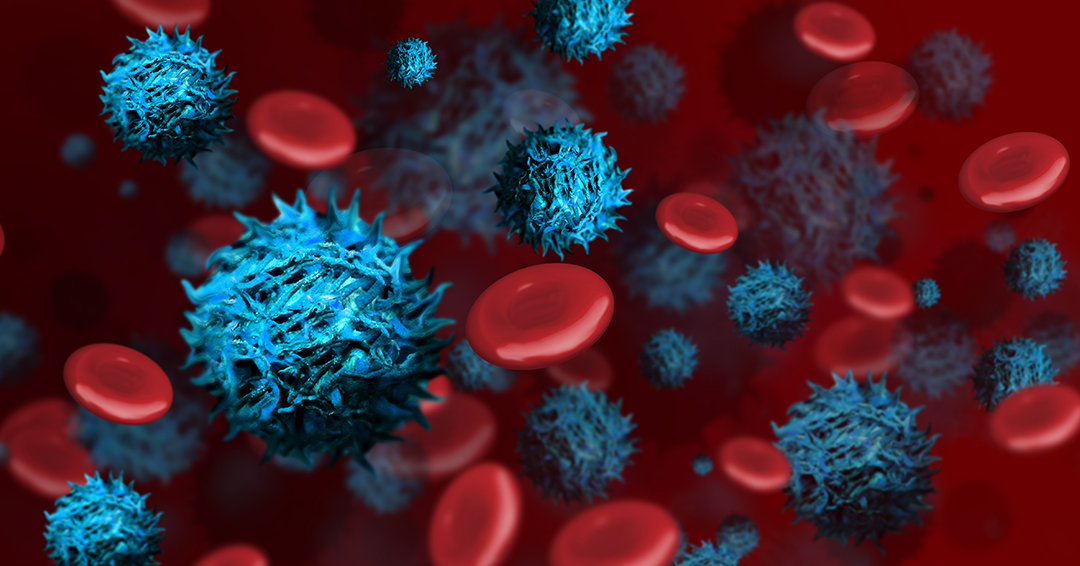
McGill researchers and collaborators have added a key component to the medicine chest in the fight against fatal acute myeloid leukemia (AML).
Under normal circumstances, stem cells differentiate themselves and turn into normal blood cells. But when something happens that makes that process go wrong, they divide uncontrollably, crowding out all the normal cells. “That’s when you get blood cancer,” says Bruktawit (Bruk) Maru, a PhD candidate in the McKeague Lab at McGill University’s Department of Pharmacology & Therapeutics. “AML is a very aggressive type of blood cancer, and we don’t have an effective treatment. Right now, the five-year overall survival rate is about 20 percent.”

In a recent paper published in the journal Cell Reports Medicine, Bruk notes that up until now, apoptosis, a type of programmed cell death, was considered the predominant mode induced by cytarabine, the front-line chemotherapy for AML. “We’ve basically challenged the view that apoptosis is the only relevant form of cell death. We propose there’s another clinically favourable form of cell death, which is parthanatos.”
Parthanatos is a PARP1-dependent cell death pathway that is distinct from apoptosis, necrosis, or other known forms of cell death. PARP1 (poly ADP-ribose polymerase 1) is a critical protein in DNA repair that modifies itself and other proteins post-translationally.
At present, most AML patients are treated with the front-line drug, cytarabine, a pyrimidine analogue that is converted into its active triphosphate form within the cell. It competes with deoxycytidine and is incorporated into RNA and/or DNA of the cancer cell, hindering its replication and leading to the inhibition of DNA synthesis. “This makes it a specific drug for rapidly dividing cells, such as cancer cells. However, while it may be beneficial for some, others experience no benefits, and in some cases adverse effects,” says Bruk. “So we need better ways of predicting the outcomes of these patients so that we can have a more targeted therapy.”
According to the French-American-British (FAB) sub-classification system, AML can be divided into eight subtypes based on the specific cell type involved, and the stage of maturation at which cell development stopped. Better understanding of AML subtypes would help dictate the type of treatment that will be administered.
The researchers also found that in addition to being clinically relevant, parthanatos induction is clinically favourable. Patients who are treated with cytarabine where parthanatos was induced had a three-fold longer overall survival rate. “That gives us an opportunity to target it therapeutically. It’s possible that we can induce parthanatos in all patients, and hopefully, by doing that we can improve the outcomes in a much larger number of patients,” Bruk says. “If the type of cell death that’s induced by this frontline induction therapy influences how well patients respond to the drug or not, then it gives us a better way of identifying patients that will respond to the drug versus those that won’t.
“In terms of AML treatment specifically, you can think of this protein [PARP1] as a double-edged sword because it can either mediate DNA damage repair, or it can induce cell death through parthanatos. It becomes a key protein that can really tip the scales. Our work shows that median expressors of PARP1 can support higher chemotherapeutic sensitivity as compared to situations where PARP-1 is over and under-expressed. And I think it’s possible that what’s happening here is that if you have too high PARP1, then that could mean too much DNA damage repair is happening and so the drug is not able to kill the AML cells anymore. But if you have too little PARP1 then you don’t have enough of this protein’s activity to induce cell death. And so, our work is showing that median expression could have favourable outcomes,” Bruk explains.
To take this treatment to the clinical level, Bruk says a lot more work needs to be done. “We need to strengthen this link to be able to target specific biomarkers of treatment response and see if it can actually cause the things that we are proposing. Much due diligence needs to be done before we can reach the stage of clinical application. But I think it holds a lot of promise and moving forward, I’m very excited to work further on this.”
